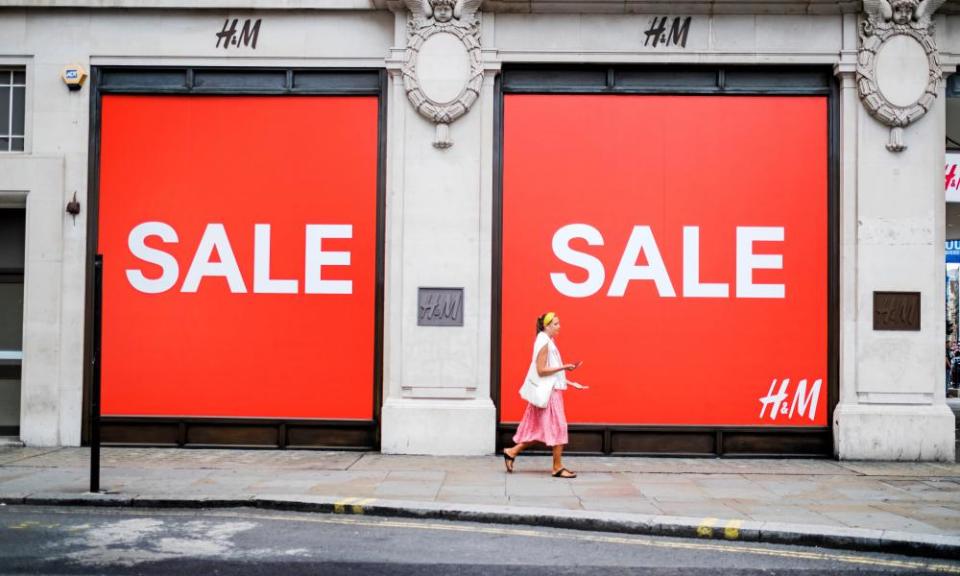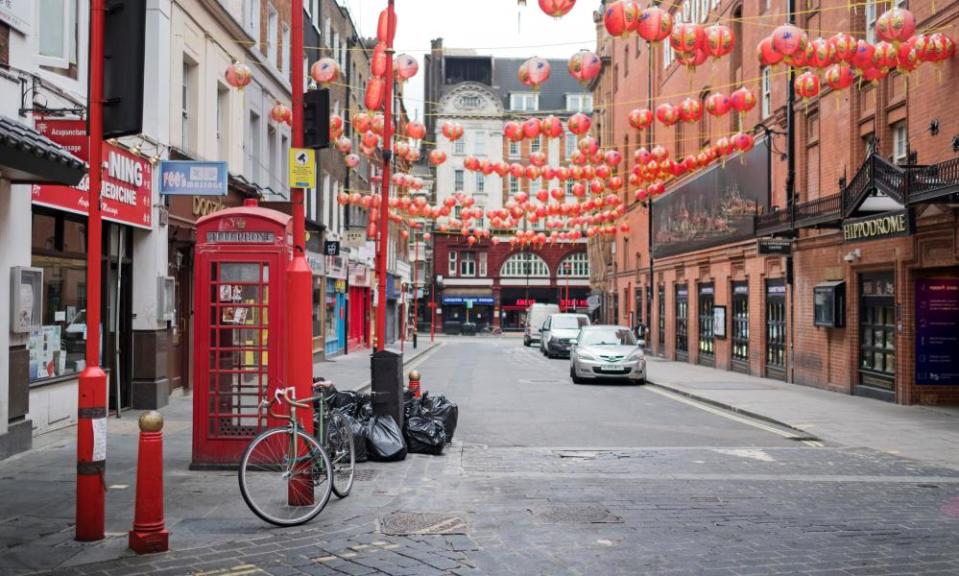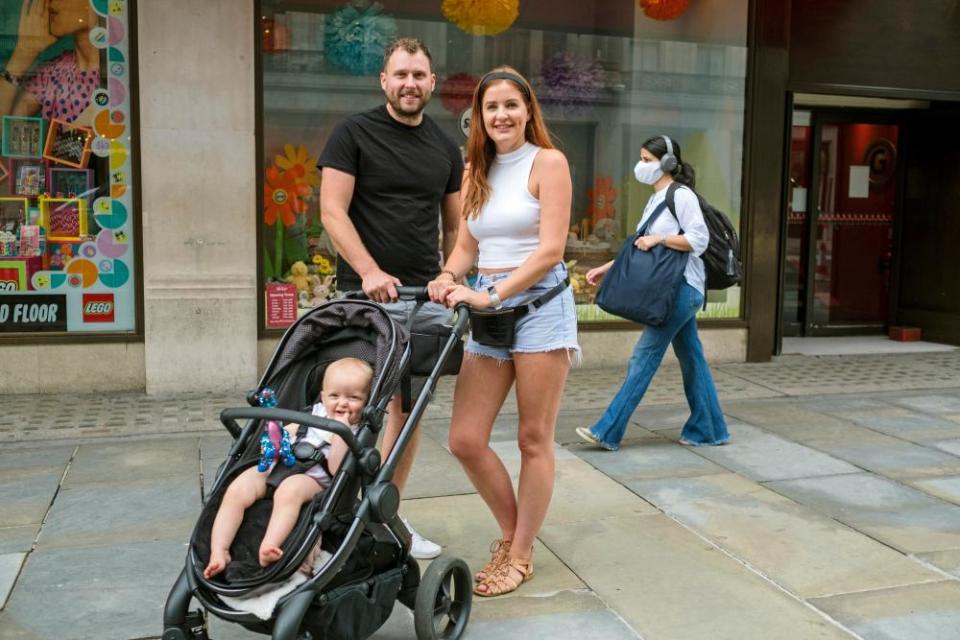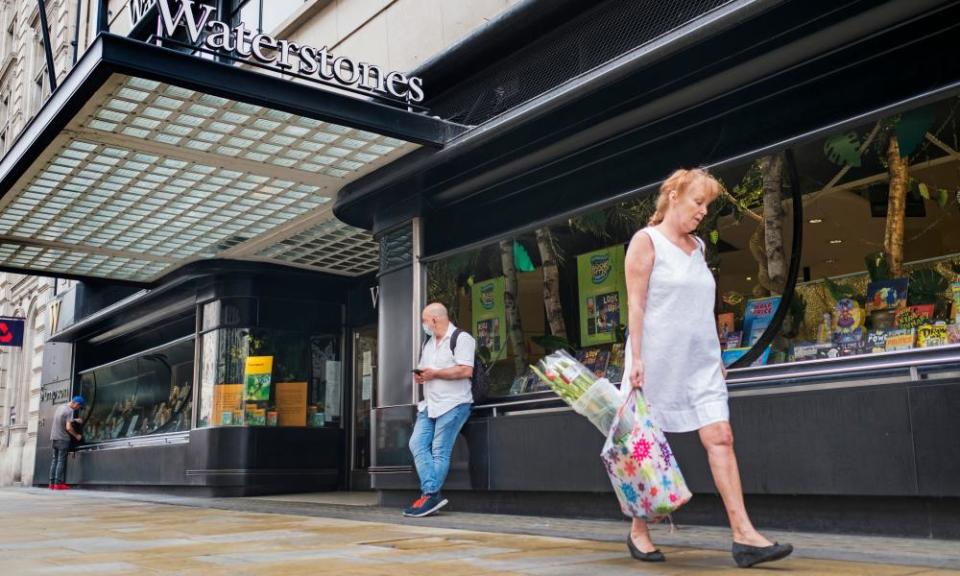'It's the worst I've ever seen': London’s West End struggles to bounce back

Mid-August should be boom time for central London. The streets would usually bustle with shoppers, workers and tourists, looking to spend their cash in the West End’s shops, restaurants and leisure attractions.
But not this year. Vast swathes of the capital’s streets that once hummed with traffic and pedestrians lie quiet. On Friday morning just a scattering of shoppers were browsing the heavily discounted summer clothes and shoes inside department stores such as Debenhams, John Lewis and Selfridges on Oxford Street, usually Europe’s busiest shopping street.

The picture is repeated in Birmingham, Manchester and other cities, as office workers and international travellers stay home, shoppers stay local and day-trippers escape to the country or the seaside.
Related: Footfall in London's West End down by two-thirds on last year
This is felt nowhere as acutely as in London’s West End, a district with relatively few residents and which the vast majority of people usually commute into on public transport.
The Salisbury family from Abingdon, Oxfordshire, had ventured to the capital for a short city break to enjoy the tourist attractions without other tourists.
Parents Helen and Warren had taken their daughters Jasmine, 10, and Beth, 13, to the Tower of London and London Zoo. Both, they said, were “very quiet”. Reassured by the presence of hand sanitiser stations they felt their visit was “a risk, but a considered one,” said Helen.

But few are following their lead. Two months after the reopening of shops, footfall in London’s premier shopping streets – Oxford Street, Regent Street , Bond Street and Mayfair – remains stubbornly low. It is 63% below 2019 levels, according to figures produced this week by the New West End Company (NWEC), which represents 600 businesses in these top retail destinations.
“It’s the worst that I have ever seen,” said Jace Tyrrell, chief executive of NWEC, who has worked in the district for two decades.
The group warns that London’s prime shopping area will miss out on £5bn of sales this year – a 50% drop on 2019 – which could lead to 50,000 job losses.
“In every boardroom decisions are being made,” said Tyrrell. “It’s weeks not months away as to which stores they’ll close, how many redundancies they will make and that’s why it is so fragile and precarious right now.”
On Regent Street, two dancers performed routines to pop music, in a bid to draw shoppers into toy emporium Hamleys, but just a handful of customers browsed the seven storeys of toys and games.
“When we came at Christmas, we couldn’t get in,” said Elisabeth Walmsley, 34, leaving the store with her husband, Craig, and 11-month-old daughter, Darcia, the proud owner of a new dinosaur toy.

On nearby Piccadilly, sales at Waterstones’ six-storey flagship have plummeted 85%, said the retailer’s managing director James Daunt, noting the chain’s city centre stores have been the worst hit.
Stores in prime shopping locations demand high rents, and in normal times high business rates, which current sales levels don’t come close to covering.
Waterstones briefly reopened its Covent Garden branch after lockdown, but “if you can’t cover the lighting (costs) you have to close again”, said Daunt, adding that the problems faced by London are replicated in other European capitals and US cities including New York and Los Angeles.
“My real concern isn’t for my own business, even though we are working very hard for not a lot,” said Daun. “Big chains can soak up most things but the little guy is what I worry about, smaller businesses.”
Smaller business often depend on serving coffees to and dry cleaning shirts for the nation’s army of office workers.

Only a third of UK office workers have gone back to their desks, according to research from US bank Morgan Stanley, a proportion which lags well behind other European nations.
London is particularly vulnerable to the slow return of workers. About 33% of all of the money spent in the UK by workers comes from people working in London locations, and that is equal to £3bn a year, according to analysis from consultancy Caci.
On Tottenham Court Road, many of the food outlets which would usually sell salads, soups and sandwiches to a throng of office workers haven’t yet reopened their doors.
“Office workers are essential,” said Ros Morgan, chief executive of the Heart of London Business Alliance, which represents 500 retail, cultural and hospitality businesses between Leicester Square and Piccadilly, “I do worry about how long the West End can last without them. We are having conversations about how we can encourage employers to bring their workers back.”
The mayor of London, Sadiq Khan, who has hitherto encouraged Londoners to work from home and steer clear of public transport wherever possible, now considers continued working from home an “existential threat” to the city.
Khan is calling for government support for city centres and has highlighted the importance of an improved test-and-trace system. He also wants an extension to the business rates holiday for the retail, leisure and hospitality sectors.
Transport, however, remains a major hurdle for bringing visitors back to city centres. London’s tubes and buses are still relatively quiet, but many people equate public transport with being crammed cheek by jowl with strangers in a way that defies any sort of social distancing.
Meanwhile, driving into central London comes at a cost of up to £27.50 a day, not including parking costs: at least £15 per day in congestion charge fees, and an additional £12.50 emissions charge for older, more polluting vehicles.

In the meantime, until office workers return, there are very few overseas tourists, who usually account for half of the West End’s £10bn annual turnover, to plug the gap.
“There are no customers and this is a big shop,” said Shafiq Ahmad, 26, gesturing out of the window of the Souvenirs & Luggage store on Oxford Street, currently staffed by two people instead of the usual 12.
“This shop depends on tourists,” said Ahmad. “At the moment we are running with zero to be honest.”

 Yahoo News
Yahoo News 